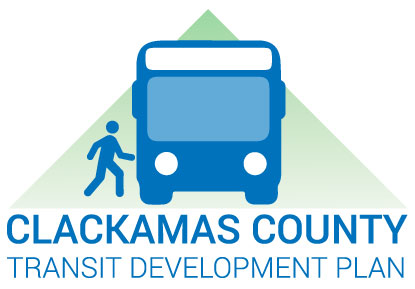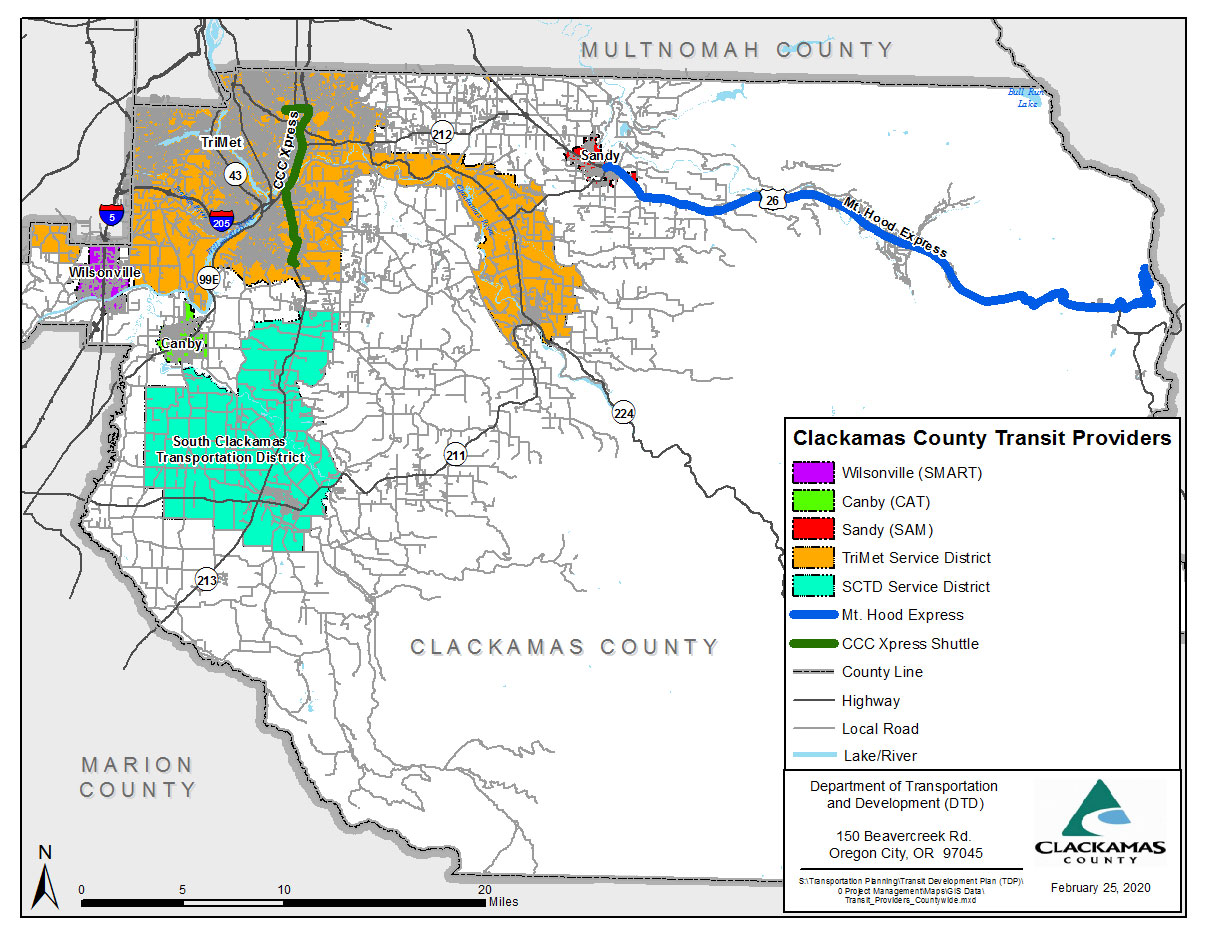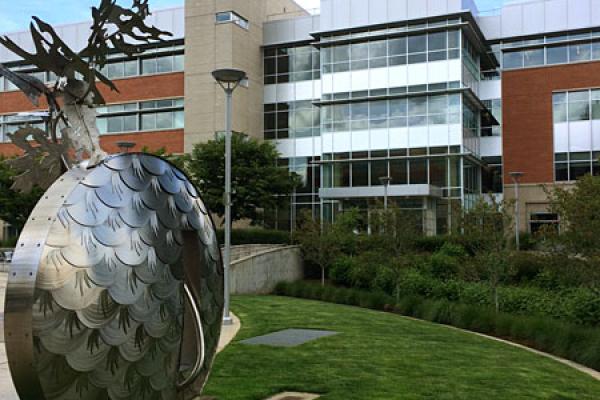 Clackamas County’s first-ever Transit Development Plan was approved by the Board of County Commissioners on April 29, 2021.
Clackamas County’s first-ever Transit Development Plan was approved by the Board of County Commissioners on April 29, 2021.
The plan sets the stage for improved and increased transit throughout the county. With seven transit service providers in Clackamas County, there are still large areas of the county with no transit service, and existing service varies in frequency, access and connectivity. The final plan is being used to guide transit investments in the county.

Explore Our New Transit Development Plan (storyboard)- Plan vision: Provide guidance for an equitable, safe, convenient and connected transit network throughout Clackamas County that will support the health and well-being of Individuals, communities, the economy and the environment.
- Plan recommendations
Areas of Focus
- Inside TriMet’s service district (orange area of the map)
- Includes most cities inside the Metro urban growth boundary (UGB), extending to Estacada; including a large portion of the rural area along Stafford Road
- Work to be done: detailed analysis and level of service information
- Unincorporated Clackamas County with no transit service (gray area of the map)
- Develop recommendations for how transit service providers can connect through these areas
- Work to be done: Review connections in areas outside the jurisdictions of current transit providers:
Transit Service Providers in Clackamas County
- TriMet – northwestern portions of the county, with an extension to Estacada
- Sandy Area Metro (SAM) – Sandy
- Canby Area Transit (CAT) – Canby
- South Clackamas Transit District (SCTD) – Molalla
- South Metro Area Regional Transit (SMART) – Wilsonville
- Mt. Hood Express – Sandy to Timberline Lodge
- CCC Xpress Shuttle – Clackamas Community College (service to Oregon City and Harmony campuses from Clackamas Town Center MAX Station)
- #ClackCo Connects - Clackamas County
Project Advisory Committee
Stakeholders and residents from throughout the County met regularly to review project information and plans, make suggestions and recommend the final Transit Development Plan. Meetings will be open to the public and include time for public comment.
Meeting Schedule
| Jan. 26, 2021 5 p.m. to 6:30 p.m. |
Held via Zoom agenda presentation summary |
| Nov. 4, 2020 | Held via Zoom agenda presentation summary |
| July 28, 2020 | Held via Zoom agenda presentation summary |
| May 12, 2020 | Held via Zoom agenda presentation summary |
Project Advisory Committee (PAC) Members
| Name | Organization |
| Cristina Reynaga | South Clackamas Transportaiton District Board of Directors |
| Linda Howland | South Metro Area Regional Transit Dial-a-Ride Steering Committee |
| Laura Edmonds | North Clackamas Chamber of Commerce |
| Michelle Emery | Todos Juntos Transit Provider |
| Glenn Koehrsen | Aging Services Advisory Council |
| Stephen McMurtrey | Clackamas County Housing Authority |
| Jackson Calhoun | Rex Putnam Earth Club |
| Bobbi Bryan | Redland-Viola-Fischers Mill CPO |
| Maggie Anderson | Clackamas Community College Student |
Background
HB 2017-Keep Oregon Moving*, created a new funding source for transit operations and capital expenditures. Aside from the Mt. Hood Express, Clackamas County is not a transit provider. However, areas outside of a transit district or service area also have the opportunity to receive funding for transit, contingent upon having a plan that identifies priority transit needs and investments. The small city transit providers have worked closely to coordinate an “out-of-TriMet district” set of investments for the initial TriMet STIF plan. During this planning process, a need was identified to create a single document addressing the connections between service provider areas, and to identify ways in which coordination and cooperation can be improved throughout the Study Area.
*HB 2017-Keep Oregon Moving, created a new funding source for transit operations and capital expenditures. Areas outside of a transit district or service area have the opportunity to receive funding for transit, contingent upon having a plan that identifies priority transit needs and investments.
In December 2018, Metro approved an updated Regional Transit Strategy with additional guidance on providing better transit service. The Service Enhancement Plans and the Regional Transit Strategy, as well as priority service improvements identified in the TriMet STIF plan, will be the foundation for the work of the CCTDP within the TriMet service area.
In June 2018, the County hosted a Transit and Housing Workshop where professional staff from jurisdictions throughout the Study Area discussed actions needed to increase access to housing and jobs through better transit service. These concepts will be explored further during the Project to provide guidance on ways to make transit service a more viable option to choice riders, identify the types of transit facilities needed to support transit connections, bring forward innovative ways to provide service in rural and suburban locations, and provide input into land use actions that support transit.
Detailed Project Objectives
- Assess the transit level-of-service to identify gaps in transit service and coverage;
- Assess the connections between transit and land use and identify potential actions to improve land use transit-supportiveness;
- Identify opportunities to meet the transportation/transit needs of vulnerable populations and to provide access to destinations that are important to vulnerable populations;
- Identify transit equity issues that exist for low-income households and identify connections to provide better access to employment and housing for transit dependent populations;
- Enhance coordination between transit service providers and provide guidance on seamless access to transit options regionally by evaluating technology integration and fare uniformity;
- Provide strategic guidance for service improvements that will address the findings in the above assessments and improve the integration between systems from a County perspective;
- Address issues emerging from Metro’s 2018 Regional Transit Strategy, such as implementation of the enhanced transit concept, transit expansion and first/last mile connections;
- Integrate a range of transit options, such as shuttles, express service, vanpools, micro transit and Transportation Network Companies (i.e., Uber and Lyft);
- Identify priority transit service enhancements that can be integrated into future STIF plans and TriMet planning, and other planning work or funding opportunities; and
- Preserve the function of state highways by expanding regional public transit availability and reducing the number of single-occupancy vehicles on the road.
Just the Facts
Funding: $175,200 from the federal Fixing America’s Surface Transportation Act (FAST Act), through a Transportation & Growth Management grant from the Oregon Department of Transportation.
Timeline: January 2020 – January 2021
For more information:
- Contact Brett Setterfield, bsetterfield@clackamas.us, 503-742-4511 or
- Visit www.clackamas.us/planning/transit to stay up-to-date on project process and opportunities to provide feedback.
 Translate
Translate







